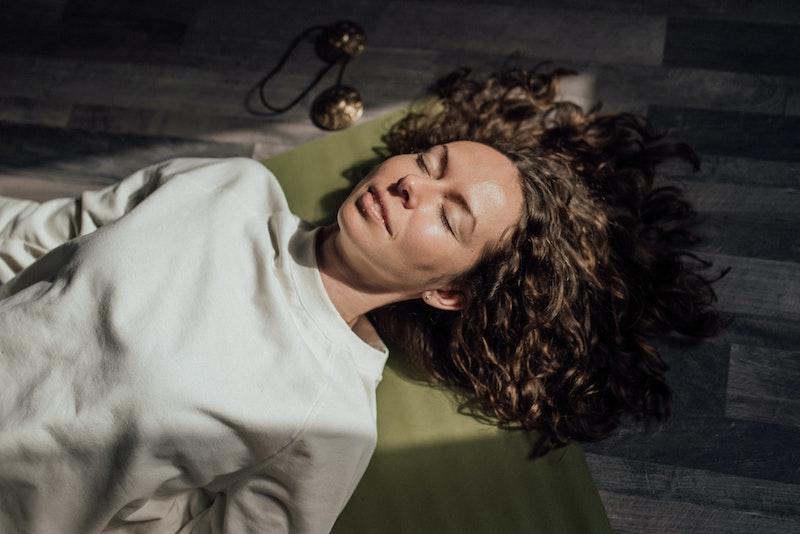We have all experienced the difference between being mindful and mindfull. First, consider a time you were completely absorbed by the beauty of the sunset or in utter awe with a baby’s first smile. Were you mindful or mindfull? What about a time you were worrying about work while talking to a loved one? Were you mindful or mindfull?
The difference between being mindful and being mindfull is simple. One is grounded in the present whereas the other pulls us into thoughts of the past and/or future.
MINDFUL
To be mindful is to be aware of what is present, here and now. It is to be awake to our immediate experience. It is to ‘take in’ the moment with curiosity and non-judgment.
MINDFULL
To be mindfull is to be filled with thoughts - and typically, to be ‘lost’ in these thoughts. Within a matter of seconds, we could be thinking about dinner, last night’s date, and tomorrow’s meeting.
In this fast and busy world, a lot of us spend most of our time mindfull. That is, overwhelmed with thinking activity that pulls us away from living here and now. When our mind is full (and when we’re not mindful of what it’s filled with), we can end up stressed or anxious. Luckily, we can meet that busy mind with mindfulness. Science shows that mindfulness can help to reduce stress and anxiety, which overthinking can stir up. But how exactly can mindfulness help?

How can Mindfulness Help?
When we are overwhelmed by thoughts (or when we are mindfull), mindfulness can help us in two primary ways.
First, it can help us to become aware of our thought patterns. It can help us to step out of the fast-thinking stream and to watch the flow as an outside observer. This can help us to witness our thoughts rather than be swept away by them.
Second, mindfulness can help us to re-anchor our attention in the present moment. This can help to settle worrying thoughts about the past or future. We can practice this by bringing our attention to our breathing, to sounds, or to the earth beneath our feet.
Mindfulness Techniques to Be Here and Now
To get better at the art of being ‘here and now’, we can practice simple mindfulness exercises. Consider the following four practices to strengthen presence. After a short practice, you might ask yourself:
During that practice, was I mindfull or mindful?
There are no right or wrong observations to make. Often, a single practice contains moments of both mindfulness and mindfullness. Remember: this is a practice and each moment is brand new.
Mindful breathing is one of the most common mindfulness practices out there. This exercise can help you to anchor your attention in the breath and thereby quiet the mind.
Another great way to practice mindfulness is to drop into the physical body. This body scan meditation can shift your attention from thoughts to the physical body, which can ease the mind.
You can also practice being ‘here and now’ by noting blessings in the present moment. Are you grateful for your breath? For the roof above your head? For the rain or sun or wind around you?
4. Mindful Walking Meditation
One final mindfulness exercise you might like to try is mindful walking meditation. This practice helps to bring us right back down to earth, into our feet and the surface beneath them.

Simple & Daily Mindfulness
Besides formal mindfulness exercises, you can calm a full mind by bringing awareness to everyday activities. For example, the next time you shower, eat, brush your teeth, or wash the dishes, give it your full attention. How does the warm water feel as it hits your skin? What does your food smell like? What textures make up each bite?
Again, check in with yourself during or after these mindful moments. Were you mindful or mindfull as you brushed your teeth? As you walked the dogs? As you said hello to your neighbor? You might also get curious: What is the difference in the quality of my experience when I am mindful vs mindfull? Note that curiosity is a cornerstone of mindfulness.
Benefits of Mindfulness
It is worth noting that mindfulness offers a range of additional benefits. While this list is not exhaustive, the benefits of mindfulness include the following:

More Tips for Being Mindful
There are even more ways to support yourself with mindfulness when you find your mind is full. For instance, if you notice you’ve been lost in a hundred thoughts, celebrate that moment of noticing. That brief moment, in and of itself, is mindfulness. With practice, you will begin to notice more and more of these moments. This will strengthen your ability to bring yourself back to the ‘here and now’.
You can also practice mindfulness by weaving 1-minute mindful exercises into your day. For instance, you can start your day with a 1-minute check-in. Notice what it feels like to breathe as you wake. Notice what your bed feels like beneath your body. Or, end your day with a 1-minute check-in. You might close your eyes and take three slow breaths to settle the mind. Then, silently name three blessings of the day behind you.
In the midst of all this mindfulness practice, remember to be patient and compassionate with yourself. On top of curiosity, non-judgment is key. There is no need to judge your thoughts - or to judge yourself for having many thoughts. Be a compassionate observer as you ask yourself: In this moment, am I mindful or mindfull? If you find the answer is ‘mindfull’, follow up with: How can I support myself at this moment to be more mindful? Lean into any mindfulness practice that feels right for you, here and now.












